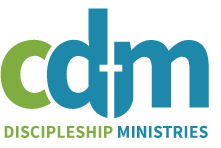![]() We have reviewed a number of books over the past several years dealing with Islam, the fastest growing religion globally and in North America. The 9/11 tragedy of terror, evil, and horror has been instrumental in raising the level of consciousness about Islam at home and abroad. Some Christians are beginning to realize we cannot afford to avoid this issue. It is a threat to Christianity, referred to by Muslims as a religion of infidels. It is a threat to our western way of life with is intentional integration of faith and life in all areas, including politics and religion.
We have reviewed a number of books over the past several years dealing with Islam, the fastest growing religion globally and in North America. The 9/11 tragedy of terror, evil, and horror has been instrumental in raising the level of consciousness about Islam at home and abroad. Some Christians are beginning to realize we cannot afford to avoid this issue. It is a threat to Christianity, referred to by Muslims as a religion of infidels. It is a threat to our western way of life with is intentional integration of faith and life in all areas, including politics and religion.
The sooner Christians in mass awake to this challenge and prepare themselves to give a reason for the hope that we have in Christ, especially as it relates to reaching out to Muslims, the better off we will be.
This book, without a doubt, is one of the best sources for Christians to study. It could also have significant consequences for our Muslim population, if they would read and compare the differences. Zaka and Coleman, the first an easterner and the former a westerner, insist on looking at the evidence for the two religions in their original sources, the Holy Bible and the Noble Qur’an to examine the differences. They maintain when that happens, you are left with only one conclusion, and that being they are two different religions. They represent two different truth systems and two different ways to salvation.
There are so many things that I appreciate about this book, but due to space, I mention only a few. What we need to do, with God’s help, is to establish relationships with the Muslims around us. Dialogue versus confrontation is the best approach. As we do that, we also want to establish an opportunity to talk about our two faiths. What does each believe and why? We want to do that in a respectful way that does not dismiss the fact that both the Christian and the Muslim are image bearers of God. To do that, you examine the original sources of the two religions-the Noble Qur’an for Islam and the Holy Bible for Christians.
As the authors clearly illustrate, so much misunderstanding exists between the two religions and most of it is unjustified and without an authoritative base. Even from the beginning of the Islamic faith, the authors include a biographical sketch of Muhammad that illustrates this very point. So much hearsay and fragmented pieces must be dealt with in order to look at the truth.
The Truth About Islam gives us many charts of comparison along with the sources of where Christianity and Islam differ. These charts are important for two reasons. First, they clarify what both religions believe in key areas. Second, they will be useful for those seeking to dialogue with one another. For example: here is what the Noble Qur’an says and here is what the Holy Bible says. Here are their similarities and here are their differences. Specifically, they compare what the two sources say about prophets, since Muhammad is viewed as the prophet from Allah. This is essential for meaningful and respectful dialogue.
Living within our politically correct environment, there is the increasing claim that Christianity and Islam worship the same God and both are equally valid. We must know how to deal with that mindset. Both cannot be true, therefore, we need a base to compare, dialogue, and conclude. This book will definitely help in that area. The authors deal with a number of biblical models and they apply good common sense to communicating with Muslims. The dos and don’ts table in the final chapter could not be more practical and biblically sound.
Read this, study it with your adults and youth groups and then look for opportunities to apply what you learn. As the church, we cannot turn away from the present challenge confronting us in Islam.
